Española Island, Galapagos: Ultimate Travel Guide
Española Island, the southernmost gem of the Galapagos archipelago, is a UNESCO World Heritage Site teeming with unique wildlife, dramatic landscapes, and unspoiled beaches. This guide covers everything from its iconic waved albatross colonies to snorkeling hotspots like Gardner Bay, ensuring you make the most of your visit to this lesser-known gem.
Española Fast Facts
- Oldest Island: Formed 4 million years ago, Española is one of the archipelago’s oldest islands.
- No Human Population: Unlike Santa Cruz or San Cristóbal, Española is uninhabited, preserving its raw natural beauty.
- Waved Albatross Sanctuary: Hosts 30,000+ waved albatrosses - the only place they breed globally.
- UNESCO Recognition: Part of the first World Heritage Site designated in 1978.
- Volcanic Silence: No active volcanoes, making it a stable ecosystem for rare species.
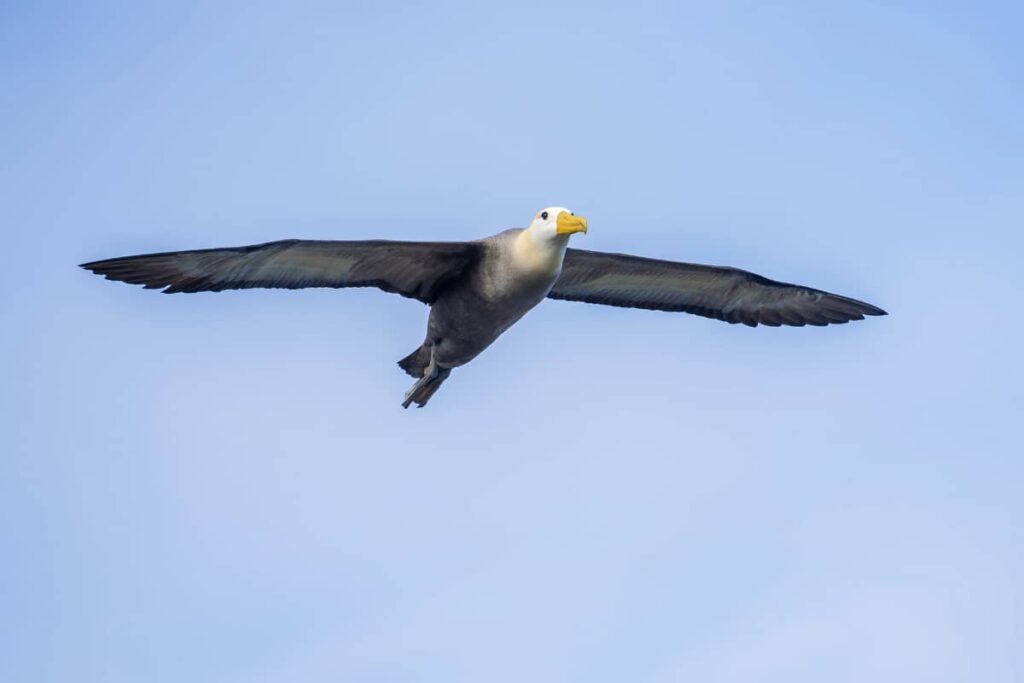
Española Activity Highlights
- Punta Suarez: Hike volcanic cliffs to see the “blowhole” and nesting seabirds.
- Gardner Bay: Snorkel with sea lions or relax on white-sand beaches.
- Soplador Blowhole: Watch ocean waves erupt through lava tubes.
- Birdwatching Trails: Spot blue-footed boobies, Española mockingbirds, and swallow-tailed gulls.
- Marine Iguanas: Observe the island’s unique “Christmas iguanas” with red-green hues.
- Photography Tours: Capture lava lizards, Galapagos hawks, and albatross courtship dances.
Española Animal Highlights
- Waved Albatross: Wingspan up to 7 feet; breeds March - December.
- Marine Iguanas: Red-and-green endemic subspecies.
- Galapagos Sea Lions: Playful pups sunbathe on Gardner Bay.
- Española Mockingbird: Bold, curious birds found nowhere else.
- Blue-Footed Boobies: Nest alongside Nazca boobies at Punta Suarez.
- Galapagos Sharks: Spot them while snorkeling near coral reefs.
History
Española’s history is intertwined with volcanic activity and evolutionary isolation. Charles Darwin bypassed it during his 1835 voyage, but its unique species later inspired his theories. In the 1960s, conservationists used tortoises like Diego the tortoise (recently retired) to spearhead breeding programs, saving giant tortoises from extinction. The island’s name honors Spain (Isla Española), though its indigenous wildlife remains its true legacy.
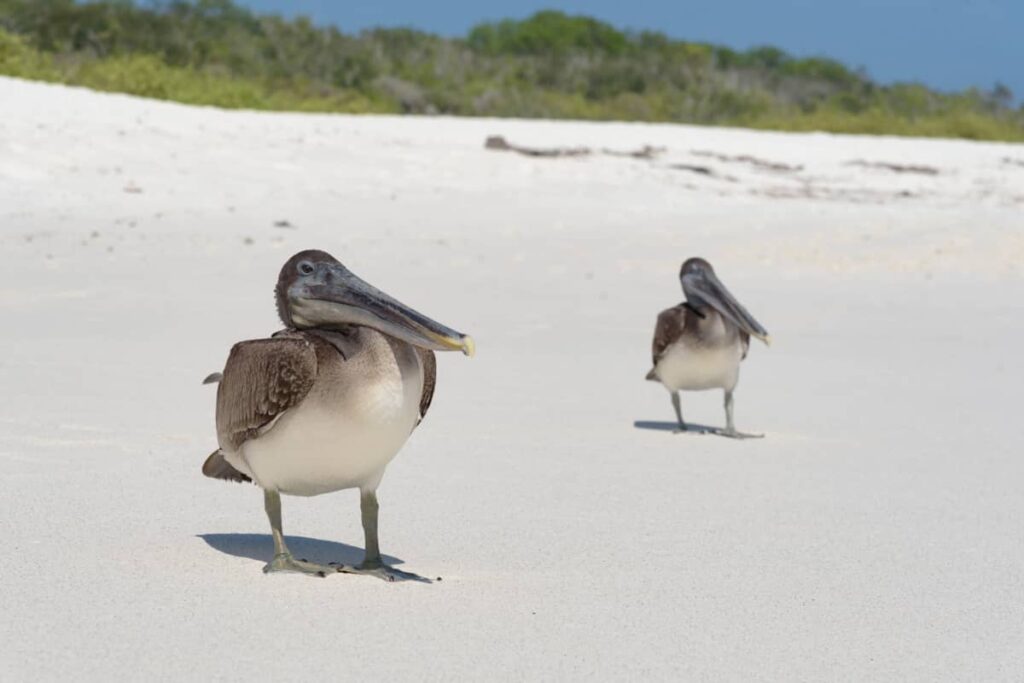
Geography
- Area: 23 square miles (60 km²).
- Elevation: 675 feet (206 m) at its highest point.
- Landscape: Flat terrain with scattered hills and volcanic rock formations.
Flying to Española Island
Española has no airport. Daily flights connect Quito & Guayaquil to San Cristóbal (SCY) or Baltra (GPS), visitors then take guided cruises or island-hopping tours to explore the island.
Conservation Challenges
- Invasive Species: Goats and rats once threatened native wildlife; eradication programs succeeded in the 1990s.
- Waved Albatross Decline: Climate change disrupts breeding cycles; conservationists monitor nesting sites.
- Marine Protection: Overfishing near Gardner Bay risks reef ecosystems; the Galapagos Marine Reserve enforces strict quotas.
- Tourism Impact: Limited visitor permits (only 12,000/year) balance accessibility with preservation.
Economy
Española’s economy, like many of the islands, relies entirely on tourism. Licensed guides lead small groups, with fees funding park maintenance. Local fishermen from San Cristóbal supply cruises, but strict regulations prevent overharvesting.
Climate
Española enjoys a subtropical climate with two seasons: warm/rainy (December–May) and cool/dry (June–November). Temperatures average 75°F (24°C), with water visibility peaking in the dry season.
How to Visit Española Island
- Cruises: Multi-day expeditions include guided hikes and snorkeling.
- Island Hopping: Day trips from San Cristóbal combine Española with Kicker Rock.
Book your Galapagos adventure today!
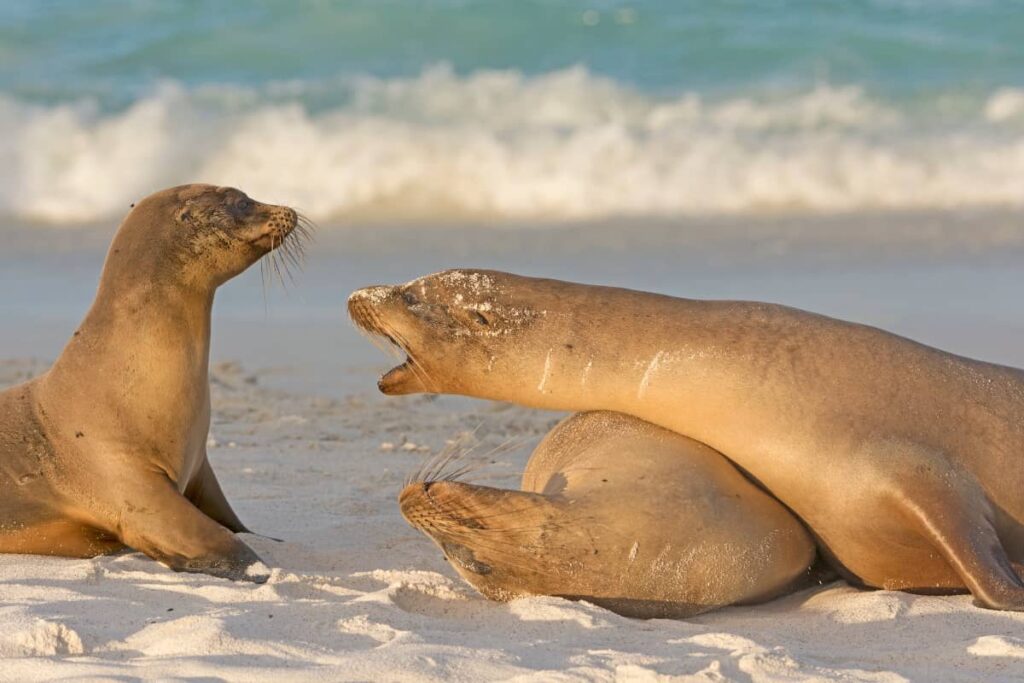
Activities & Experiences
- Snorkeling at Gardner Bay
Explore crystal-clear waters teeming with sea turtles, tropical fish, and playful sea lions. The bay’s coral reefs and underwater caves host vibrant marine life, including King Angelfish and Bumphead Parrotfish. - Hiking Punta Suarez
Walk volcanic trails to witness the iconic Soplador blowhole and nesting colonies of Waved Albatrosses (April - December). Spot blue-footed boobies and Española mockingbirds along the cliffs. - Birdwatching at Albatross Colonies
Observe the world’s only breeding population of Waved Albatross (Phoebastria irrorata), known for their elaborate courtship dances and clumsy landings. - Photography Tours
Capture Española’s endemic species, including red-and-green “Christmas iguanas” and Galapagos hawks perched on lava rocks. - Diving at Gardner Island
Certified divers can encounter Galapagos sharks, manta rays, and schools of Yellow-tailed Surgeonfish near underwater lava tunnels. - Relaxing at Gardner Bay Beach
Unwind on the island’s pristine white sands, surrounded by sunbathing sea lions and turquoise waters. - Exploring the Soplador Blowhole
Watch ocean waves erupt 30 meters high through volcanic fissures - ideal for dramatic photography. - Kayaking Along Coastal Cliffs
Paddle near Española’s rugged shores to spot marine iguanas basking on rocks and swallow - tailed gulls soaring overhead. - Sunset Observation
Experience breathtaking sunsets over the Pacific, with silhouettes of albatrosses returning to sea. - Conservation Education Tours
Learn about Española’s giant tortoise restoration and efforts to protect critically endangered albatrosses. - Flora Discovery Walks
Study endemic cacti and saltbush vegetation that sustains Española’s unique ecosystem. - Marine Iguana Spotting
Observe Española’s Marine Iguanas (Amblyrhynchus cristatus), the only subspecies with year-round red-green coloration. - Swimming with Reef Sharks
Snorkel near Gardner Bay’s rocky outcrops to encounter harmless white-tipped reef sharks. - Cultural History Tours
Discover how whalers, scientists, and Diego the tortoise shaped Española’s conservation legacy.
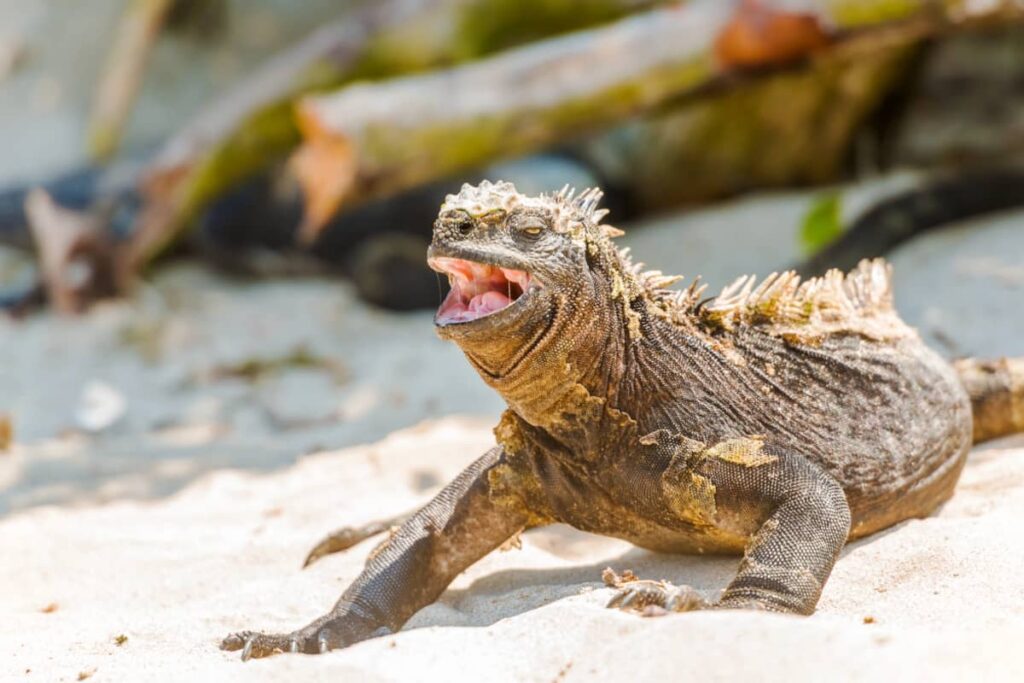
Animal Encounters
Mammals
- Galapagos Sea Lion (Zalophus wollebaeki): Playful and curious, these sea lions dominate Gardner Bay’s beaches and swim alongside snorkelers.
- Galapagos Fur Seal (Arctocephalus galapagoensis): Smaller and rarer than sea lions, they rest on shaded rocky shores during the day.
- Bottlenose Dolphin (Tursiops truncatus): Often spotted during boat rides to Española, leaping alongside vessels.
Reptiles
- Marine Iguana (Amblyrhynchus cristatus): Española’s unique “Christmas iguanas” display bright red and green hues year-round.
- Española Lava Lizard (Microlophus delanonis): Endemic to the island, these agile lizards dart across volcanic trails.
- Green Sea Turtle (Chelonia mydas): Frequent Gardner Bay’s reefs, grazing on algae and sea grasses.
Birds
- Waved Albatross (Phoebastria irrorata): Critically endangered, these birds perform comical mating dances on Punta Suarez.
- Blue-footed Booby (Sula nebouxii): Recognizable by their vibrant feet, they nest alongside Nazca boobies on coastal cliffs.
- Española Mockingbird (Mimus macdonaldi): Bold and inquisitive, they’re known to investigate visitors’ backpacks.
- Swallow-tailed Gull (Creagrus furcatus): Nocturnal seabirds with striking forked tails, nesting in cliff crevices.
- Galapagos Hawk (Buteo galapagoensis): Apex predators hunting lava lizards and young boobies in inland scrublands.
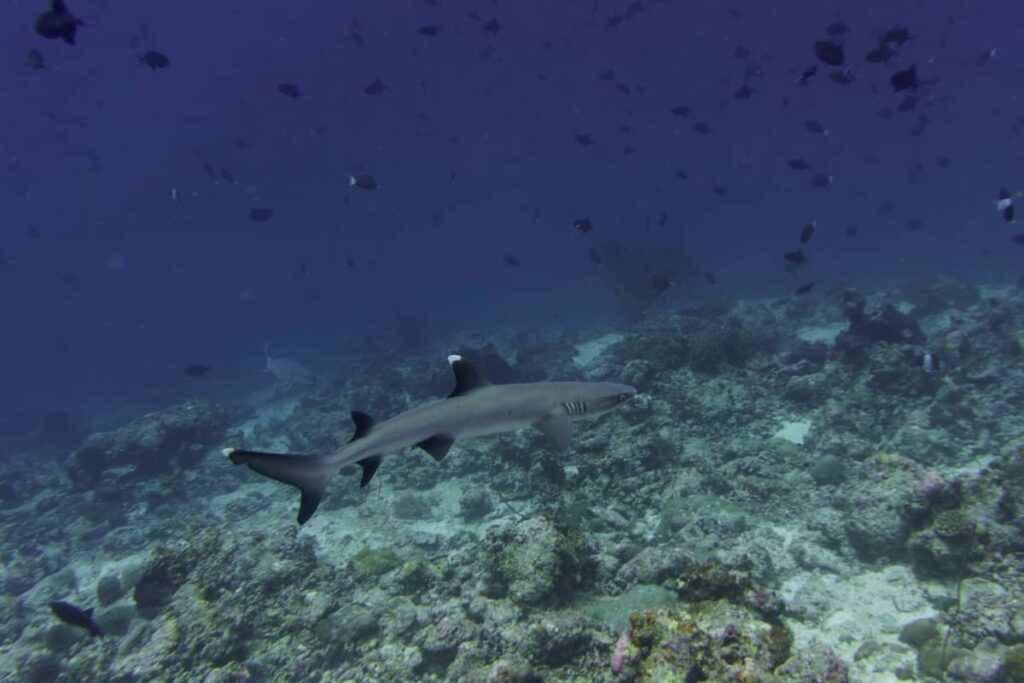
Fish & Underwater Life
- Galapagos Shark (Carcharhinus galapagensis): Common near Gardner Island’s reefs, often seen patrolling deeper waters.
- Hammerhead Shark (Sphyrna lewini): Schooling sharks visible during diving expeditions around Española.
- Spotted Eagle Ray (Aetobatus narinari): Glide gracefully through Gardner Bay’s currents, identifiable by their polka-dotted backs.
- Manta Ray (Mobula birostris): Massive filter feeders occasionally seen near underwater lava tunnels.
- King Angelfish (Holacanthus passer): Brightly colored fish thriving in coral-rich snorkeling sites.
- White-tipped Reef Shark (Triaenodon obesus): Harmless sharks resting on the ocean floor during daytime.
Travel Tips and Practical Information
- Permits Required: All visits require a licensed guide.
- Pack Light: Bring reef-safe sunscreen and/or moisturizer, binoculars, and quick-dry clothing.
- Wear Sturdy Footwear: The trails at Punta Suarez are rugged, with sharp lava rocks. Closed-toe hiking shoes with grip are essential to navigate safely.
- Prepare for Rough Boat Rides: The approximate 2-hour navigation from San Cristóbal can be choppy. Take motion sickness medication beforehand and pack a lightweight jacket for wind exposure.
- Time Your Visit for Wildlife Highlights: Plan trips between April and December to witness the waved albatross breeding season, including their unique courtship dances.
- Respect Wildlife Etiquette: Maintain a 2-meter distance from animals. Avoid feeding even bold species like Española mockingbirds, which may approach for water.
Ready to explore Española? Book your sustainable Galapagos cruise or land-based tour with us today!

